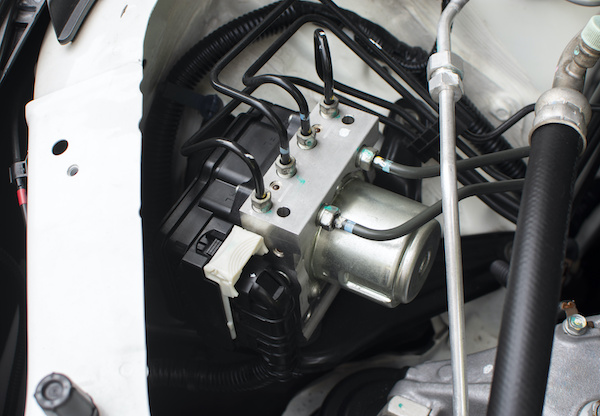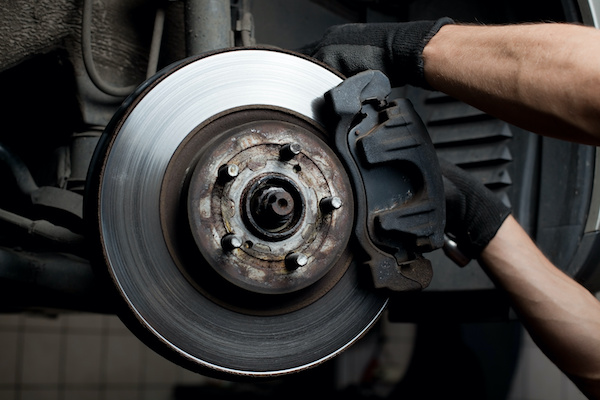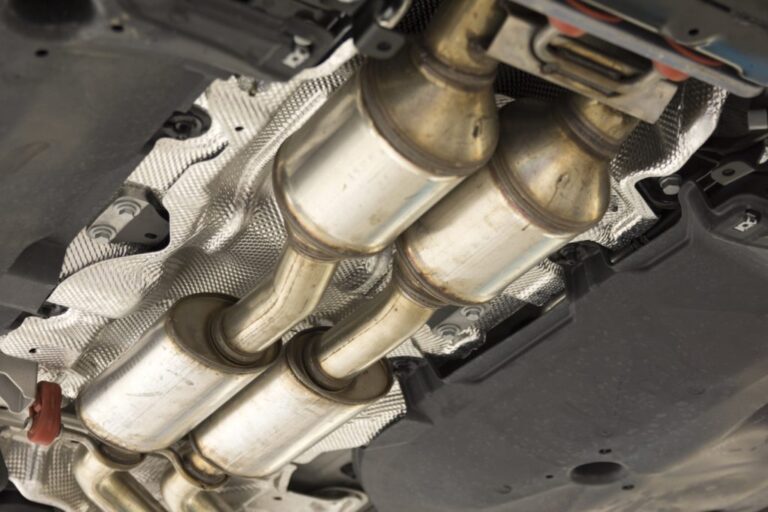How to Tell If You Have Air in Your Brake Lines
To tell if you have air in your brake lines, check for spongy brakes or a low brake pedal. Air in the brake lines can cause reduced brake responsiveness.
Ensuring your brakes are functioning properly is crucial for your safety on the road. Ignoring signs of air in the brake lines can lead to brake failure and potential accidents. Regular maintenance and inspection of your vehicle’s braking system is essential.
By being vigilant and proactive in checking for issues like air in the brake lines, you can prevent dangerous situations and keep yourself and others safe while driving. Let’s dive deeper into how you can identify and address the presence of air in your brake lines.

Credit: www.brakebleeder.com
Signs Of Air In Brake Lines
When it comes to the safety of your vehicle, the braking system plays a crucial role. Any issue with the brake lines can become a cause for concern. One common problem that can occur is the presence of air in the brake lines. Air can enter the brake system during repairs or maintenance, and it can compromise the effectiveness of your brakes. It is essential to be able to identify the signs of air in your brake lines so that you can address the issue promptly. In this article, we will discuss three common signs that indicate the presence of air in your brake lines.
Soft Brake Pedal
One of the most noticeable signs of air in your brake lines is a soft brake pedal. When you press the brake pedal, it should feel firm and responsive. However, if there is air in the brake lines, you may notice that the brake pedal feels spongy or mushy instead. This means that the brake fluid is not being compressed properly, resulting in reduced braking efficiency. It is important not to ignore a soft brake pedal, as it can indicate a serious safety issue.
Brake Pedal Sinks To The Floor
Another sign of air in your brake lines is when the brake pedal sinks to the floor when you apply pressure. Ideally, the brake pedal should remain at a certain level or height when fully depressed. However, if there is air in the brake lines, you may notice that the pedal continues to sink as you hold it down. This indicates that there is insufficient pressure in the brake system to engage the brakes properly. If you experience this issue, it is important to address it immediately to ensure your safety on the road.
Spongy Brake Feel
A spongy brake feel is another indication of air in your brake lines. When you apply the brakes, they should respond quickly and provide a firm and consistent feel. However, if there is air in the brake lines, you may notice that the brakes feel inconsistent or less responsive. They may require more force to engage or feel less effective than usual. This can greatly impair your ability to stop quickly in case of an emergency. If you experience a spongy brake feel, it is crucial to have your brake system inspected as soon as possible.
If you notice any of these signs: a soft brake pedal, a sinking brake pedal, or a spongy brake feel, it is highly likely that there is air in your brake lines. It is crucial to address this issue promptly, as it can compromise the effectiveness of your brakes and endanger your safety on the road. We recommend consulting a professional mechanic to diagnose and fix the problem. Remember, regular brake maintenance is essential to ensure the safety and reliability of your vehicle.

Credit: www.nergersautoexpress.com
Causes Of Air In Brake Lines
If you experience a soft or spongy brake pedal, it could be a sign of air in your brake lines. This issue can be caused by leaks in the brake system, low brake fluid, or improper bleeding during a brake service.
Symptoms of air in the brake lines also include reduced brake response and a longer brake pedal travel.
Brake System Repairs Or Replacements
Improper Brake Bleeding
Causes of Air in Brake Lines: Air can enter your brake lines due to reasons such as improper brake bleeding or brake system repairs or replacements.Brake System Repairs Or Replacements
When brake system parts are removed and replaced, air can get trapped in the lines, affecting brake performance.Improper Brake Bleeding
Improper brake bleeding leads to air pockets in the system, causing a spongy brake pedal and reduced braking efficiency.Diagnosing Air In Brake Lines
Visual Inspection
Look for any signs of leakage or loose connections around the brake lines.
Brake Bleeding Test
Perform a brake bleeding test to remove air bubbles from the brake system.

Credit: scruggsauto.com
Effects Of Air In Brake Lines
Air in brake lines can have a significant impact on your vehicle’s braking performance. Signs of air in the brake lines include a spongy brake pedal, longer stopping distances, and a loss of brake power. If you experience any of these symptoms, it’s crucial to have your brake lines checked and bled to remove the air and restore proper brake function.
Reduced Braking Performance
Air in your brake lines can have a detrimental effect on the braking performance of your vehicle. When air gets trapped in the brake lines, it can cause the brake pedal to feel spongy or soft, requiring more force to engage the brakes fully. This can lead to reduced responsiveness and a longer braking distance, putting you and your passengers at risk.Increased Stopping Distance
One of the clear signs that you have air in your brake lines is an increased stopping distance. Air compresses more easily than brake fluid, which means that when you press the brake pedal, the air in the lines can become compressed, leading to a delay in the application of the brakes. This delay can result in a significant increase in the distance it takes for your vehicle to come to a complete stop, making it more difficult to avoid accidents or collisions. Additionally, air in the brake lines can cause the brakes to feel less effective, resulting in a longer stopping distance. Your vehicle may also experience a loss of braking power, meaning that even when you apply maximum pressure to the brake pedal, the stopping distance may still be longer than usual.Summary
In conclusion, air in your brake lines can have serious effects on the performance of your vehicle’s braking system. It can lead to reduced braking performance, making it harder to stop your vehicle quickly when needed. Additionally, it can result in an increased stopping distance, putting you and others on the road at a higher risk of accidents. Therefore, it is crucial to regularly check for air in your brake lines and address the issue promptly to ensure your safety.Fixing Air In Brake Lines
When it comes to fixing air in your brake lines, it’s essential to understand the necessary procedures and when to seek professional help. Identifying and resolving air in brake lines is crucial for maintaining proper braking efficiency and ensuring safety on the road.
Brake Bleeding Procedure
To carry out the brake bleeding process, you will need to follow these essential steps:
- Secure the vehicle on a level surface and loosen the lug nuts on all wheels.
- Top up the brake fluid reservoir with the recommended fluid.
- Start with the wheel furthest from the master cylinder and attach a clear plastic hose to the brake bleeder valve.
- Submerge the other end of the hose in a container of brake fluid to prevent air from being drawn back into the system.
- Have an assistant press the brake pedal slowly and hold it down as you open the bleeder valve to release air and old fluid. Close the valve before the pedal reaches the floor, and repeat the process until no air bubbles are visible in the fluid.
- Move to the next wheel and repeat the bleeding process, working your way towards the master cylinder.
Seeking Professional Help
If you encounter challenges in performing the brake bleeding process or suspect there may be a more serious issue with your brake system, it’s advisable to seek professional help. A certified mechanic can diagnose and address air in your brake lines with expertise and advanced equipment, ensuring the safety and reliability of your vehicle’s braking system.
Frequently Asked Questions Of How To Tell If You Have Air In Your Brake Lines
What Are The Symptoms Of Air In Your Brake Lines?
Symptoms of air in brake lines include soft brake pedal, spongy brakes, longer stopping distance, and brake pedal sinking to the floor.
Will Air Work Itself Out Of Brake Lines?
Air can’t work itself out of brake lines. Bleeding the brake system is necessary to remove air and ensure proper brake function.
How Do You Know When Air Is In The Braking System?
Air in the braking system can cause spongy brake pedals, longer stopping distances, and the need to press harder on the brakes. Signs of air include a decrease in brake fluid level, a mushy or soft brake pedal, and brakes that feel less responsive.
Regular brake inspections and maintenance can help detect and prevent air in the system.
How Do I Get All The Air Out Of My Brake Lines?
To remove air from brake lines, start with the brake furthest from the master cylinder, then move to the next closest. Use a wrench to loosen the bleeder valve, attach a clear tube to it, and have a friend press the brake pedal while you watch for air bubbles.
Repeat until all air is gone.
How Do I Check For Air In My Brake Lines?
To check for air in your brake lines, start by inspecting for brake fluid leaks and then bleed the brakes to remove any air.
Why Is It Dangerous To Have Air In Brake Lines?
Air in brake lines can reduce brake efficiency, leading to longer stopping distances and potential loss of brake function.
What Are The Symptoms Of Air In Brake Lines?
Symptoms of air in brake lines include spongy brake pedal, longer pedal travel, and decreased braking power.
Conclusion
Being able to identify whether you have air in your brake lines is crucial for ensuring your safety on the road. By paying attention to the signs of a spongy brake pedal, reduced braking performance, and the presence of air bubbles in the brake fluid, you can take the necessary steps to address the issue promptly.
Remember to consult a professional if you’re unsure or hesitant to perform the required maintenance yourself. Stay vigilant and maintain your brake system to keep yourself and others out of harm’s way.




